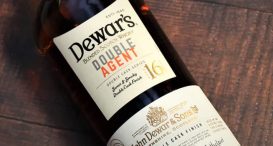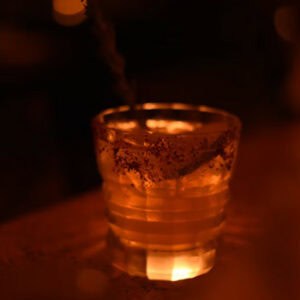We need to get past the single malts are best, blends are bad mindset, and now
let’s begin
I was reading a fascinating article recently on Just-Drinks and it really hit home that no matter how much we in the whisky industry and writing community work towards transparency and passing on the message of each product’s virtues, there is still a long way to go.
Think about it like this: blends make up ~90% of the market volume in whisky, and account for around 72% of the market value, so without blends we would not have the diversity, nor the brilliance we all enjoy from this superb aged spirit we all know and love.
Also, single malts are blends, they just happen to be from one distillery, a fact overlooked by many in the industry as a way of showing how important blending is, and something very few consumers know.
The sad thing for me, when I look around supermarket shelves and travel retail stores, is that the whole blended Scotch market, at the mass and value end, is becoming commoditised.
Competing on price, and the averageness of the category’s flavour profile in the £15 – £30 price bracket has meant that a lot of character has been lost because they can be largely interchangeable for the cash-strapped punters who buy the volume.
In early May I was a judge on the Scotch Masters tasting panel, organised and ran by The Spirits Business and my panel were presented with something like eighteen or twenty NAS blended Scotches to judge. Quite a few people would raise a smile, or say ‘hard luck’, but as a brand builder and consultant on all things marketing within the industry, this is where you have to understand consumer motivations and brand relevance.
On the whole, I was bitterly disappointed by the quality on display; many were poorly integrated, were over-oaked, were really watery and were not great examples of what Scotch, single malt or blended, could be.
For me, there is a huge opportunity at this price point to pump up the ABV a tad to something like 43 or 46%, and add some real character as the production cost to change this flavour profile cannot be that much considering the potential mass market rewards on offer if you can stand out and offer something special for not a lot of money.
The blends I tasted were:
Sippable.
Shareable.
Forgettable.
Nothing stood out, nothing grabbed me and said ‘hey, I need to be your new favourite’, and I’m assuming that is the same for consumers who treat the product like a commodity, having their favourites, but also buying based on cost more than flavour or character.
I’m not saying they are bad products, but for the mass market consumers they are interchangeable; and I say that as someone who loves dramming on entry level, ‘first rung’ blended Scotches such as Ballantine’s Finest, Johnnie Walker Double Black, and Dewar’s 12.
So, in case you are unaware, the minimum ABV for any oak barrel-aged spirit bottled that wants to be called whisky is 40% ABV, but I, along with a couple of whisky dignitaries namely Ian Buxton and Ian Wisniewski, propose that this be raised to 46% ABV.
The reasons are many; 46% ABV as a base adds more flavour, it gives you more texture, a greater mouthfeel, a bit more robustness to the spirit and means that you can add water yourself to take it to 40% ABV without breaking down the delicate flavour patterns and profiles.
It would naturally be met with resistance as you are losing 15% volume by upping the ABV, but surely if it makes a more interesting starting point, then why the hell not?
Will let you with this; Glen Moray produce a stunning set of single malts, and they are mostly sold for sub-£24 per bottle, yet have real character and display real quality and an impressive flavour profile.
If single malts can do it, it is the job of the blends to stand up and stand out in a new way.















4 thoughts on “We need to get past the single malts are best, blends are bad mindset, and now”